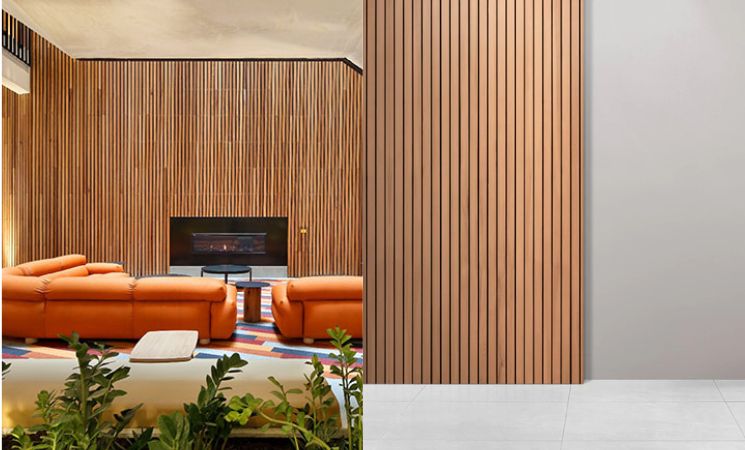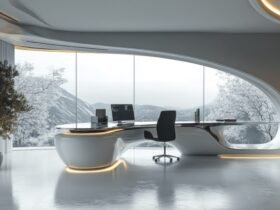The aesthetic appeal of an interior space significantly affects its perception and utility. Interior designers and architects constantly seek innovative solutions to create functional yet visually appealing environments. One element that has been increasingly popular in contemporary design schemes is the utilisation of decorative timber wall panels. These versatile and stylish materials infuse warmth and texture into commercial and residential spaces alike. This article explores how decorative timber wall panels can transform interiors and the various ways in which they can be incorporated into design plans.
Introducing Timber’s Warmth to Modern Interiors
In the world of interior design, the introduction of organic elements can create an inviting atmosphere. Timber, as a natural material, exudes a warmth that can soften the clean lines and minimalist aesthetics of modern design. The use of decorative timber wall panels is an excellent way to introduce this natural warmth into various settings, from corporate offices to cosy living rooms.
Balancing Aesthetics and Functionality
While aesthetics are pivotal, the practicality of interior elements is equally important. Timber wall panels serve multiple purposes in this regard. Not only do they provide a distinctive design feature, but they also offer functional benefits such as acoustic absorption and structural durability. The approach to integrating wall panels involves a balance where they complement other design elements rather than overpower them.
Versatility in Design
Decorative timber wall panels are famed for their versatility. Available in different textures, finishes, and patterns, they can be tailored to match various interior design themes, from rustic to avant-garde. In residential settings, a timber panelled wall can evoke a sense of comfort and sanctuary, while in commercial spaces, they can reinforce brand identity and foster a welcoming environment for clients.
Incorporating Timber Panels in Different Settings
Every interior space has its unique design challenges and opportunities. Timber wall panels are adaptable and can be used to accentuate features, create focal points, or improve the functionality of a space. Understanding where and how to incorporate them is key to achieving a harmonious design.
Residential Applications
In a home where personalisation is key, timber wall panels can be the distinctive feature that expresses an individual’s style and preferences. They can be utilised in hallways, as a headboard feature in bedrooms, or to create textured backsplashes in kitchens. Each application brings the unique character of wood into the space without overwhelming the senses.
Commercial Applications
In a commercial context, decorative wall panels can play a significant role in brand positioning. They can be strategically placed in reception areas, conference rooms, or in dining establishments to create a defined aesthetic that complements the brand image. Additionally, their acoustic properties are particularly beneficial in spaces that demand reduced noise levels.
Exterior Possibilities
While interior applications are common, certain timber wall panels are also suitable for exterior use. Treated to withstand elements, they can embellish façades, create outdoor feature walls, or enhance the appearance of alfresco dining areas. This seamless transition from interior to exterior expands the scope of design possibilities.
Installation and Sustainability
Correct installation is paramount to the performance and appearance of timber wall panels. Professionals need to ensure proper alignment, secure fixing, and consider the environmental factors within the space. Sustainability is also a crucial aspect, with many seeking eco-friendly options. Hence, sourcing from manufacturers committed to responsible forestry and using panels with low volatile organic compound (VOC) emissions is becoming a standard practice.
Customisation and Creative Expression
One of the strong suits of decorative timber wall panels is the ability for customisation. Wall panels can be cut to specific dimensions and designed with various perforations, grooves, or engravings to match a designer’s vision. This high level of customisation allows for a unique creative expression that enhances interior design schemes.
Maintenance and Longevity
To maintain the beauty of timber wall panels over time, a care regimen is essential. Fortunately, most decorative wall panels require minimal maintenance, often needing just a dusting or a wipe down to keep them in top condition. Their longevity is an additional benefit, making them a cost-effective solution in the long run.
Conclusion
Decorative timber wall panels represent a confluence of nature and design, bringing a piece of the outdoors into our living and working spaces. Their appeal lies in their innate beauty, easy integration, and the comfortable ambiance they create. As we continue to push the boundaries of interior design, the use of these timber elements remains a favoured approach for those looking to make a statement with their interiors. What is clear is that the fusion of functionality and aesthetic appeal that timber wall panels offer is unmatched, making them a staple in design portfolios.
The Path Ahead
The road ahead for interior design continues to be shaped by innovative materials that offer flexibility, sustainability, and elegance. Decorative timber wall panels are at the forefront of this journey, giving designers and homeowners alike the means to craft spaces that are not only visually delightful but also inherently comforting. As technology and design trends evolve, the potential for these panels to be reimagined and redefined is endless, ensuring that they remain a significant element in the ever-changing landscape of interior design.













